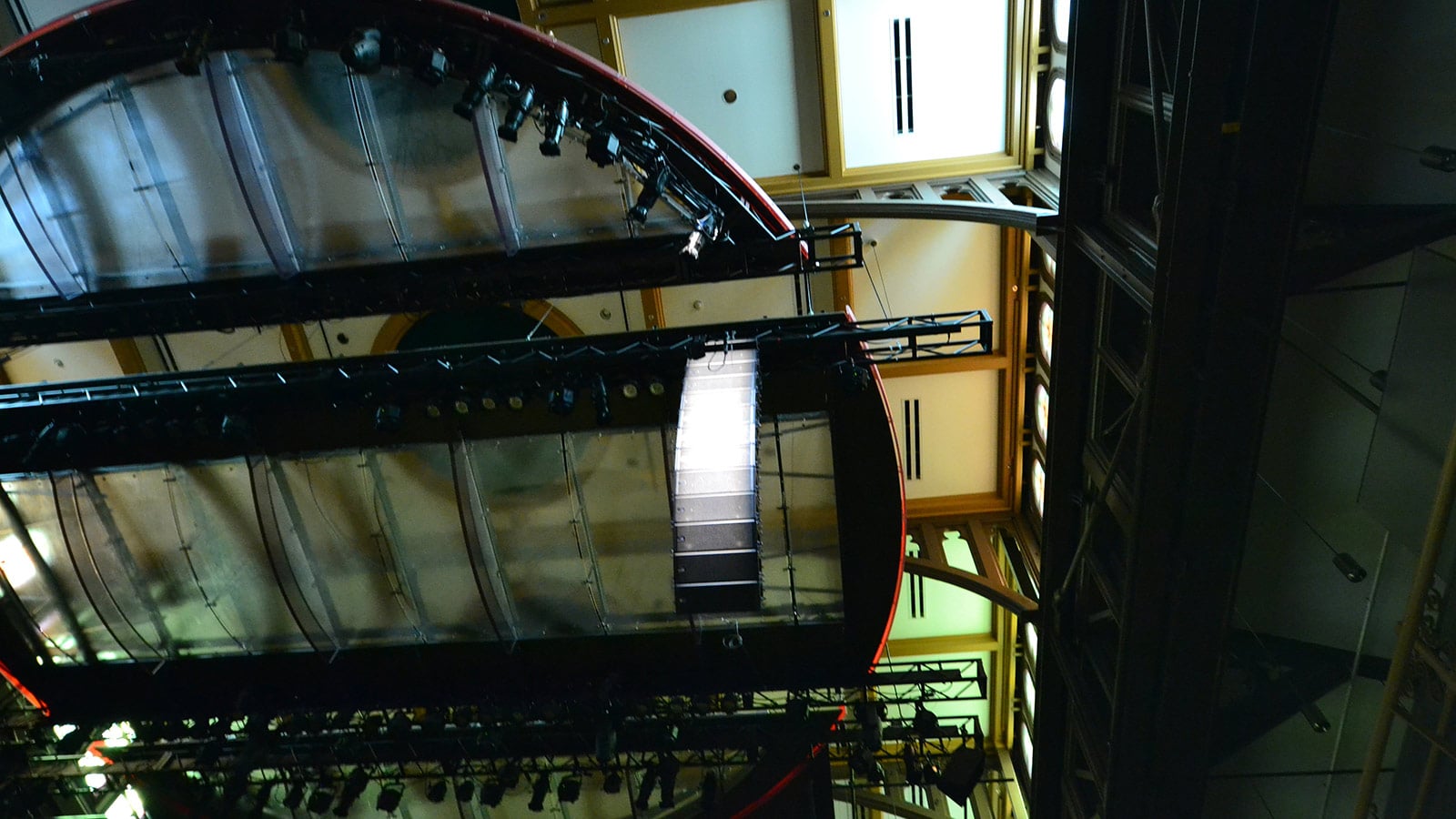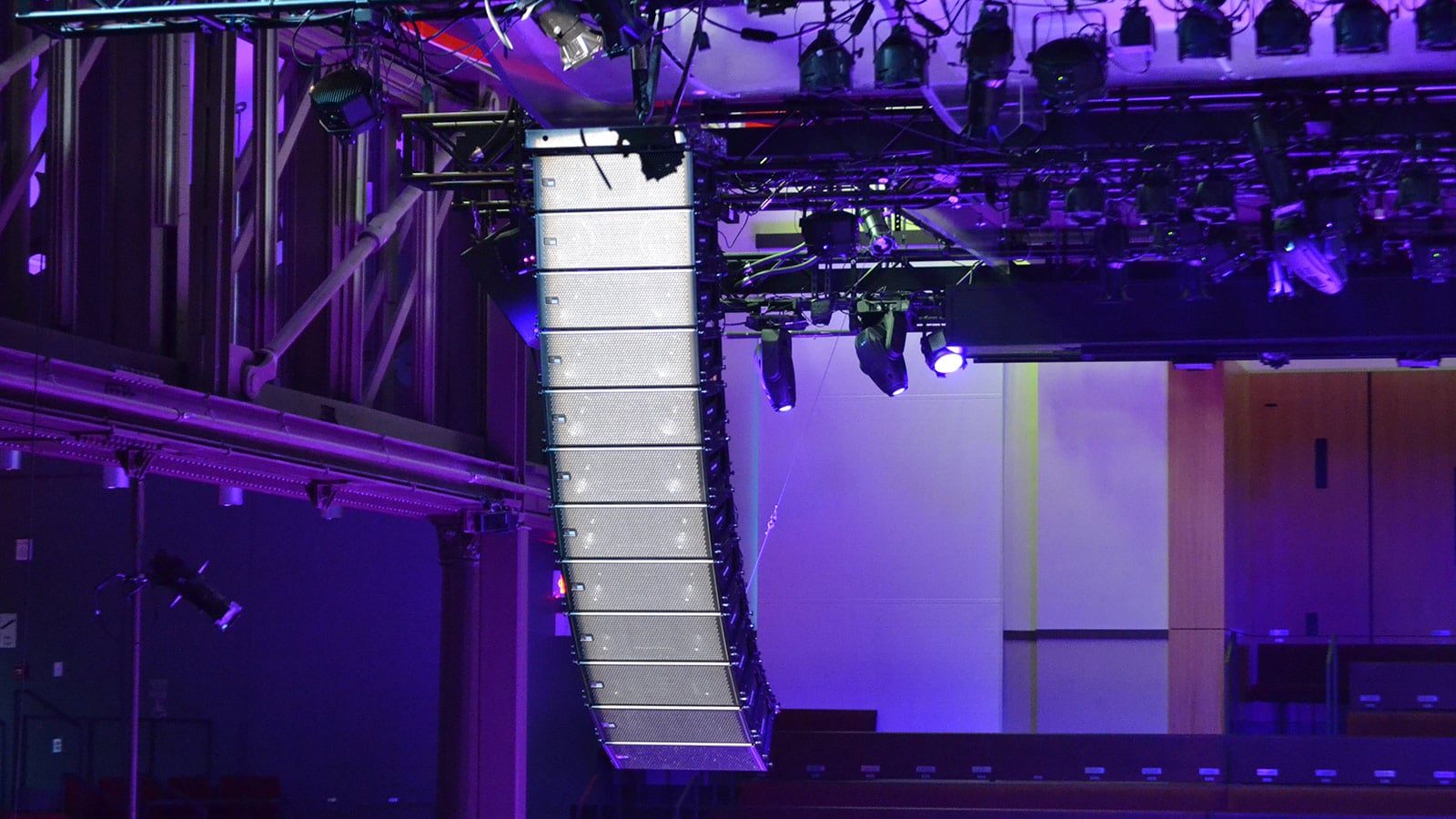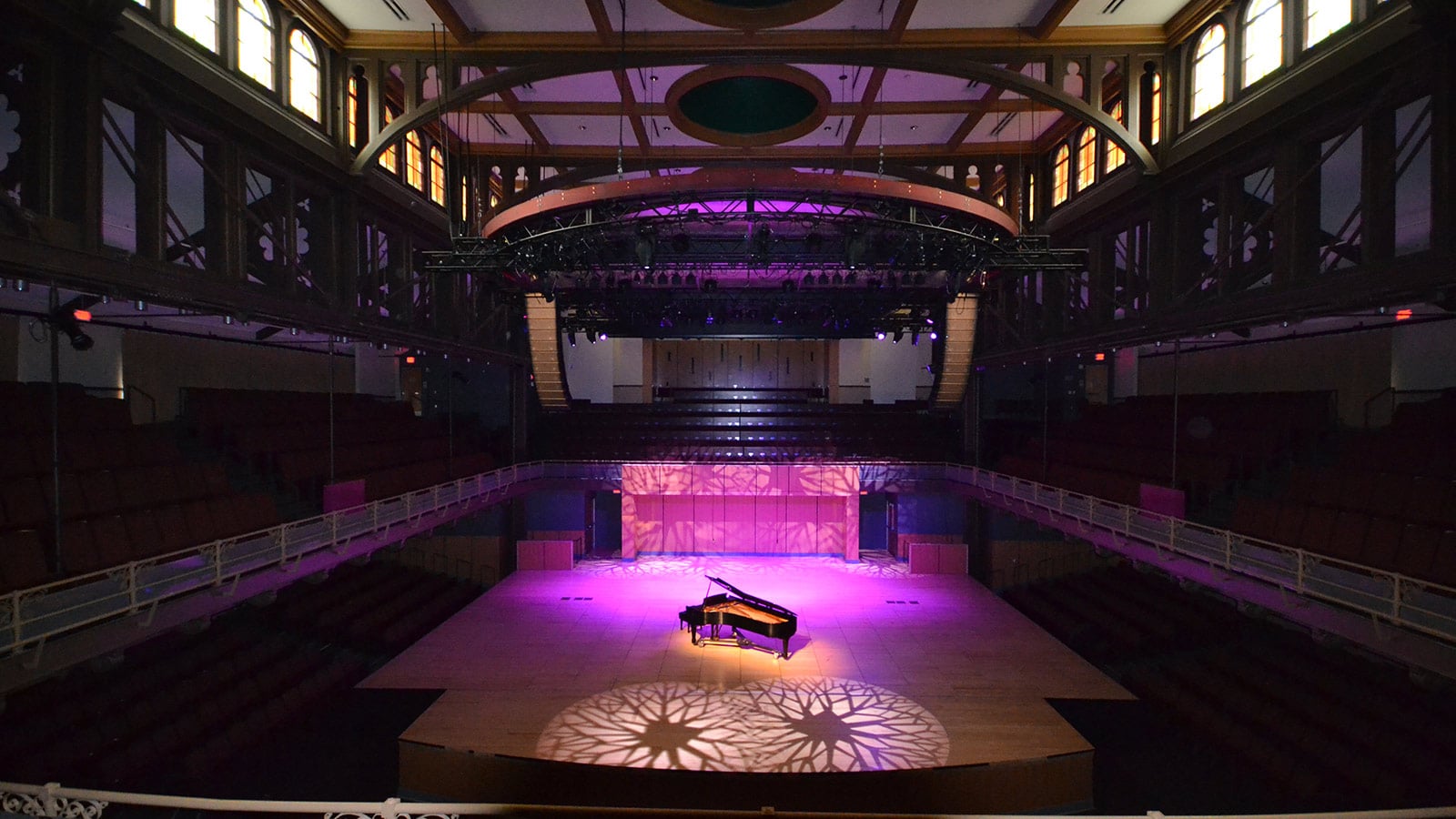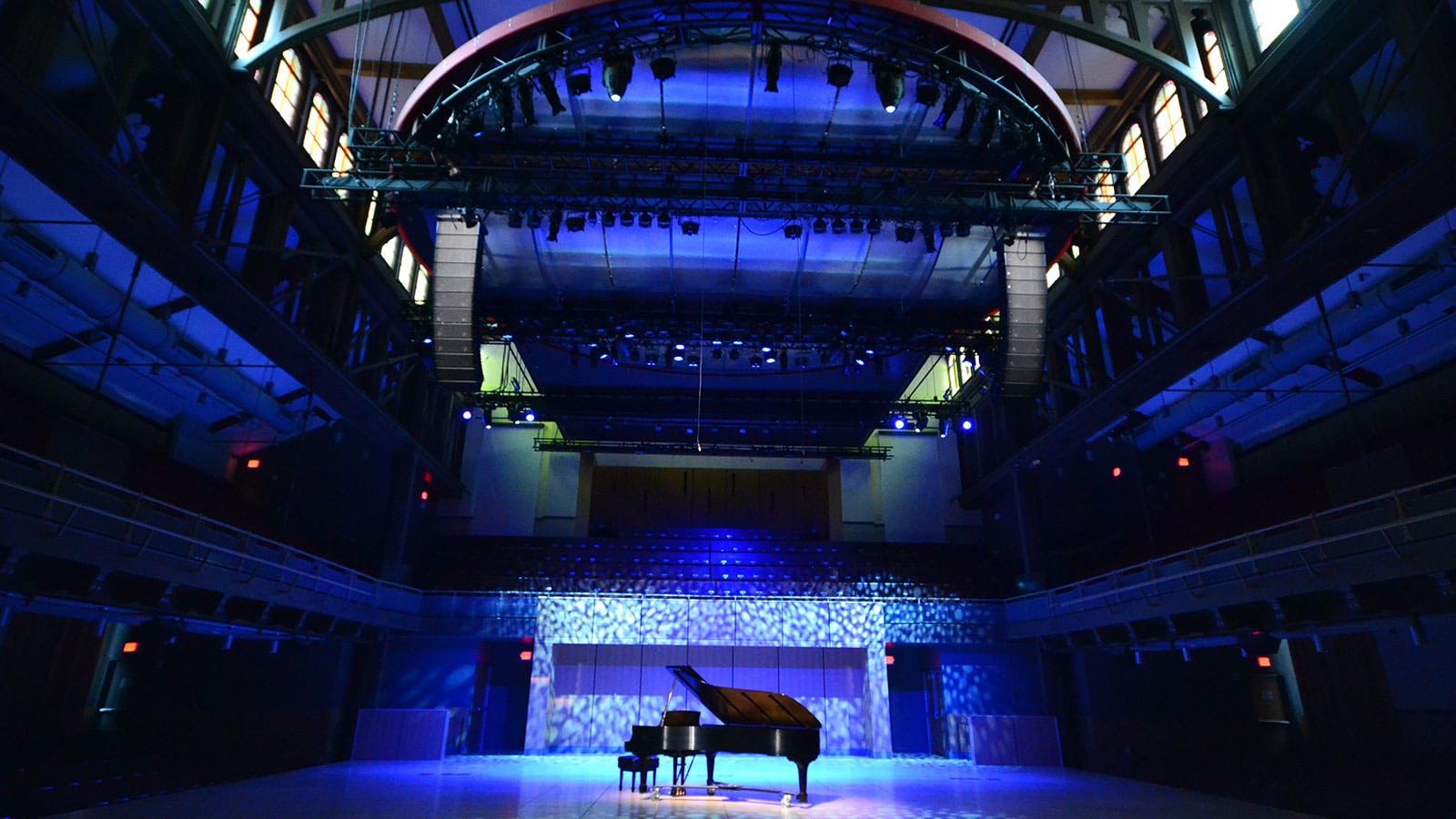M'elodie completes the picture with its combination of power, clarity, and small size. We couldn't have a huge array, but we still needed something that could deliver a rock show or contemporary gospel—which can be louder than rock—as well as classical and acoustic music. M'elodie fit the bill perfectly.”
Peter SchallAssociate Technical Director & Head Sound Engineer, Temple Performing Arts Center
Featured Products
500-HP, Galileo 616, Melodie, SIM 3Built in 1891, Baptist Temple in Philadelphia has been transformed into the Temple Performing Arts Center to serve as a principal performance venue for Temple University. The $30 million theatre overhaul included an installation of a Meyer Sound M’elodie line array loudspeaker system to support a busy calendar of university-sponsored events and bookings by area concert promoters.
“The hall looks spectacular and has excellent acoustics,” says associate technical director and head sound engineer Peter Schall. “M’elodie completes the picture with its combination of power, clarity, and small size. We couldn’t have a huge array, but we still needed something that could deliver a rock show or contemporary gospel—which can be louder than rock—as well as classical and acoustic music. M’elodie fit the bill perfectly.”
Now installed in Temple University’s 1,200-seat Lew Klein Hall, the Meyer Sound system comprises twin hangs of 12 M’elodie line array loudspeakers on each side, six 500-HP subwoofers, and a Galileo loudspeaker management system with a Galileo 616 processor. Clear Sound of nearby Yeadon provided the system, with design by company president, Chris Dietze. The system was tuned using a SIM 3 audio analyzer. Clear Sound also supplied a Yamaha PM5D-RH digital console as part of the upgrade.
“When we looked at this project, size and weight were obviously important because of aesthetics and weight restrictions on the grid,” Dietze recalls. “But other considerations pointing toward M’elodie were sound quality, box-to-box consistency, and rider-friendliness.”
The first major concert to test the system was by British rock legend Ray Davies, who was on a reprise tour in support of his 2009 release, The Kinks Choral Collection. “This show had everything, starting with softer acoustic numbers, then a full rock band and finally adding the 48-voice chorus,” Schall says. “The system absolutely delivered, and by the end of the show, Davies’s FOH engineer was just beaming, happy as a clam.”
Initially, Schall narrowed the venue’s system choice to M’elodie and one other noted manufacturer. “What tipped us toward Meyer Sound was the people,” he says. “The support we received from everybody on the team was awesome. They made sure everything was done right, every step of the way.”
The imposing structure now housing Temple Performing Arts Center was built as Grace Baptist Church, founded by Russell H. Conwell, who also started the night classes that eventually grew into Temple University. Vacated by the congregation in 1974, the Victorian Romanesque building was purchased by the university and then stood vacant for 30 years. Following the structure’s designation as a historical building by the Philadelphia Historical Commission and a landmark building by The American Institute of Architects, the university hired international architectural firm RMJM to design the venue’s full-scale renovation.




